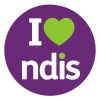Understanding Assistive Technology (AT)
Assistive Technology (AT) refers to equipment and devices that help individuals with disabilities perform tasks they might otherwise find difficult. This includes everything from simple tools to highly specialized equipment. The goal is to enhance independence and participation in daily activities.
Types of Assistive Technology
Mobility Aids: Items such as wheelchairs, walkers, and canes that assist with movement.
Communication Devices: Tools that aid in communication, such as speech-generating devices.
Sensory Aids: Equipment like hearing aids and Braille readers.
Daily Living Aids: Devices that assist with everyday tasks, such as adaptive cutlery.
Prosthetics and Orthotics: Artificial limbs and supportive devices.
Environmental Control Systems: Systems that help control household items, such as smart home technology.
Home Modifications: Changes to the home environment, such as installing ramps or modifying bathrooms.
Adaptive Software and Hardware: Specialized computer software and hardware that make technology more accessible.
NDIS Funding for Assistive Technology
The NDIS funds AT that:
Is related to the participant’s disability.
Supports the individual in their daily life and goals.
Is considered reasonable and necessary.
Is not funded by other systems, such as health or education sectors.
Levels of Assistive Technology
Basic (Level 1): Simple, low-cost items like a non-slip bath mat.
Standard (Level 2): Medium-cost items requiring some adjustment or setup, such as walking frames.
Specialized (Level 3): Customizable items needing professional setup, like power wheelchairs.
Complex (Level 4): Highly specialized, often custom-made items, such as custom prosthetics.
Steps to Apply for Assistive Technology
Planning Meeting: Discuss your AT needs during your NDIS planning meeting. Your plan will outline your goals and the supports you require.
Assessment: A professional such as an occupational therapist will assess your needs. This assessment will determine the most appropriate AT for you.
Evidence Gathering: Collect supporting documents, including quotes and reports from your assessor, to justify the need for the AT.
Submission: Submit your application through the NDIS portal or with the help of your plan manager. The processing time for applications can vary from 28 to 50 days, depending on the complexity and cost of the AT.
Managing NDIS AT Funding
Self-managed: You control the funds and payments directly.
Plan-managed: A plan manager handles payments and record-keeping on your behalf.
NDIA-managed: The National Disability Insurance Agency manages your funds, allowing you to use only registered providers and adhere to NDIS pricing limits.
For additional information, call us at 1800 780 108 or email us at admin@achora.com.au










